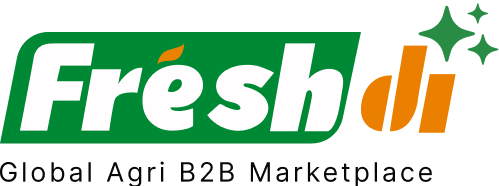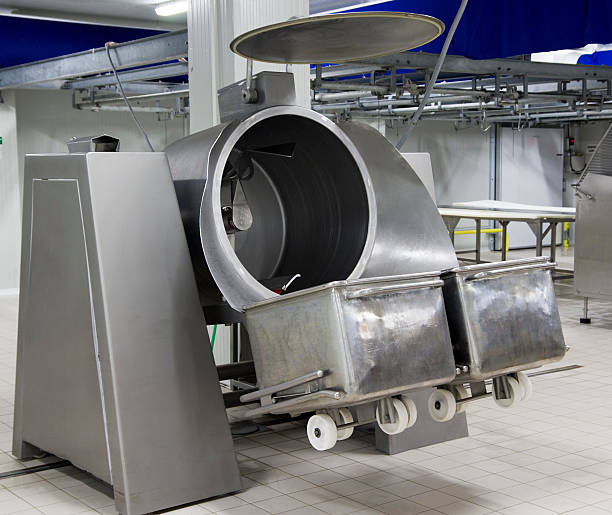Introduction – South Korea’s Chocolate Confectionery Market by the Numbers
South Korea is quickly becoming a heavyweight in the global chocolate confectionery scene. With a market valued at approximately USD 714.82 million in 2024, and projections indicating a climb to USD 811.12 million by 2030, this East Asian nation is blending tradition with innovation to meet both domestic and international demand.
What’s driving this growth? A blend of rising consumer demand for premium and artisanal chocolates, a strong cultural emphasis on gift-giving, and a growing appetite for healthier chocolate options. Events like Valentine’s Day and White Day are not just romantic—they’re big business for chocolatiers.
But here’s the catch: if you’re a buyer or business looking to tap into this sweet opportunity, you need more than just a hunch. You need cold, hard data—and that’s where platforms like Freshdi come in. By leveraging real-time RFQ trends, supplier verifications, and market insights, Freshdi helps businesses make smarter, more profitable sourcing decisions.
Deep Dive – Key Production, Export Statistics & Demand Insights
While exact chocolate-specific production data is scarce, South Korea’s broader snack production volume in 2024 was substantial, indicating a robust manufacturing base that includes chocolate confectionery. The industry is clearly geared for scale.
On the import side, South Korea brought in 57.20 million kilograms of confectionery products in 2023—a 17.92% jump from the previous year. The total import value hit USD 328.16 million, proving that the country is a major consumer as well as a producer.
Exports tell a fascinating story too. Though the export volume dipped by 29.69% to 31.03 million kilograms, the export value rose by 14.35% to USD 103.53 million in 2023. This suggests a shift toward higher-priced, value-added chocolate products—in line with the global trend toward premiumization.
Platforms like Freshdi reflect these movements in real time. By analyzing RFQ (Request for Quotation) volumes, buyer interest, and supplier responsiveness, Freshdi offers a unique window into what’s hot in the market—and who’s delivering.
Top 8 Verified Chocolate Confectionery Suppliers in South Korea – Leading Exporters by Volume
These suppliers have been handpicked based on their export performance, global reach, certifications, and buyer reviews on the Freshdi platform. Whether you’re a global retailer or a local distributor, these companies are worth your attention.
-
Samkwang Fisheries
Known for its consistent quality and diversified product offerings, Samkwang Fisheries has emerged as a reliable name in the export of chocolate-based snack items. Their strong logistics and compliance with international food safety standards make them a go-to for global buyers. -
Teraso Food
Teraso Food specializes in both traditional and modern chocolate confectionery. With strong in-house R&D and attractive packaging, they’ve become favorites in markets like Southeast Asia and the Middle East. -
Younggun Trading Corporation
This trading firm has carved out a niche by connecting high-quality South Korean chocolate producers with global buyers. Their sourcing flexibility and emphasis on premium chocolate lines stand out in buyer reviews on Freshdi. -
Hyojung Fnt Co.
Hyojung Fnt Co. focuses on health-conscious chocolate products, including sugar-free and dark chocolate variants. They’re especially popular with buyers looking for trending, wellness-oriented confectionery. -
Lotte Wellfood Co., Ltd.
A household name in South Korea, Lotte has massive production capabilities and a rich product lineup. Their premium chocolate lines are gaining popularity in North America and Europe. -
Orion Confectionery Co., Ltd.
Orion is a pioneer in Korean snacks and has a strong export pipeline. Their chocolate-covered biscuits and bars are top sellers in China and Russia. -
Crown Confectionery Co., Ltd.
With decades of experience, Crown blends tradition with innovation. Their chocolate wafer products are especially popular in Southeast Asia. -
Chocolate Story
A rising artisanal brand, Chocolate Story is gaining traction for its bean-to-bar ethos and exotic flavor infusions like yuzu and matcha. Though smaller in scale, they’re a hit in the premium segment.
Dynamic Ranking Note
The supplier landscape isn’t static. Platforms like Freshdi offer dynamic rankings such as “Suppliers of the Month” or “Top Exporters of the Quarter,” based on real-time performance metrics, buyer feedback, and RFQ fulfillment rates. This ensures buyers always connect with the most active and reliable suppliers.
Market Navigation – Statistical Trends, Value Dynamics & Export Dynamics
Let’s talk chocolate variants. South Korean consumers—and by extension, export markets—are showing a clear tilt toward premium and health-oriented chocolates.
- Premium chocolates are projected to grow at a CAGR of 8.4% till 2030, hitting nearly USD 299.6 million in annual revenue.
- Sugar-free chocolates are gaining traction, with a 3.65% CAGR, reflecting the rise in health-conscious consumer behavior.
- Dark chocolates, often seen as the healthier sibling in the chocolate family, are speeding ahead with the fastest growth rate of 3.75% CAGR through 2030.
Seasonal demand spikes around Valentine’s Day, White Day, Pepero Day, and year-end holidays create price fluctuations and supply chain bottlenecks. Smart buyers use historical procurement data—available through Freshdi—to time their purchases and avoid high-season premiums.
Conclusion – Leveraging Data for Optimized Supply Chains
South Korea is not just riding the chocolate wave—it’s helping shape it. With strong domestic production, rising exports, and a clear shift toward premium products, the country offers a golden (or should we say cocoa-colored?) opportunity for global buyers.
But here’s the kicker: choosing the right supplier is half the battle. That’s where data-driven platforms like Freshdi come in. From verifying certifications to analyzing RFQ performance, Freshdi takes the guesswork out of global sourcing.
Checklist for Chocolate Confectionery Buyers
✅ Look for suppliers with verified export volumes and certifications
✅ Prioritize companies with high ratings and active RFQ participation on platforms like Freshdi
✅ Watch for seasonal price trends—buy smart, not just cheap
✅ Evaluate product variants based on your market’s health and premium preferences
✅ Use Freshdi’s market insights to spot emerging suppliers and trends
Future Outlook
By 2030, South Korea’s chocolate confectionery market will be more sophisticated, health-focused, and globally connected than ever before. Buyers who adapt early—leveraging tools like Freshdi—won’t just survive in this evolving market. They’ll thrive.
References
- Mordor Intelligence – South Korea Chocolate Market
- Statista – Snack Product Production in South Korea
- Tridge – South Korea Confectionery Imports & Exports
- FAS USDA – Korea Chocolate Market Brief
- Grand View Research – Premium Chocolate Market South Korea
FAQs
1. What makes South Korean chocolate confectionery unique in the global market?
South Korean chocolates stand out due to their fusion of traditional flavors, premium packaging, and a growing emphasis on health-conscious ingredients like dark chocolate and sugar-free options.
2. How can a buyer verify a supplier’s credibility in South Korea?
Platforms like Freshdi provide verified supplier profiles, export volumes, certifications, and buyer reviews to ensure transparency and trust.
3. Are South Korean chocolate products suitable for health-conscious consumers?
Absolutely. With the market shifting toward dark chocolates and sugar-free options, there’s a growing range of healthier choices available.
4. When is the best time to source chocolate confectionery from South Korea?
Avoid peak gifting seasons like February and November, when prices spike. Use platforms like Freshdi to track seasonal pricing and plan purchases strategically.
5. What’s the role of Freshdi in the chocolate supply chain?
Freshdi acts as a B2B bridge—offering real-time RFQ trends, market intelligence, and supplier verification tools to help buyers make informed, profitable sourcing decisions.





